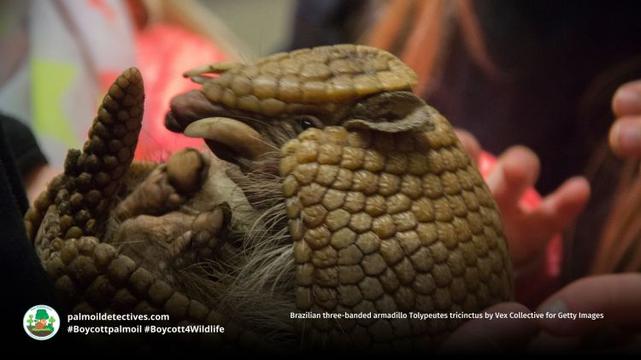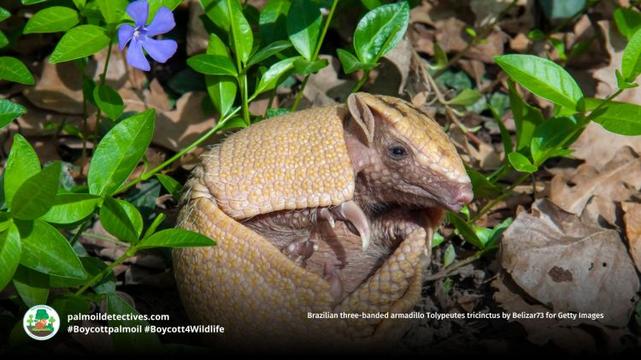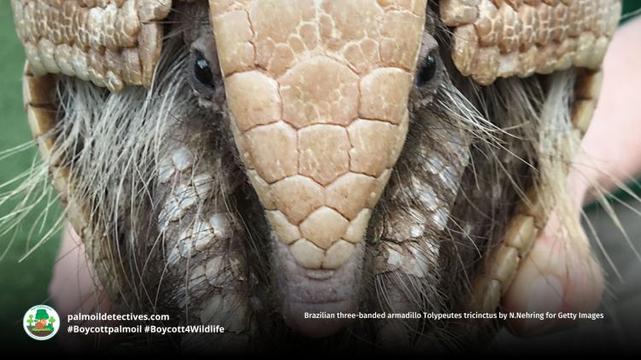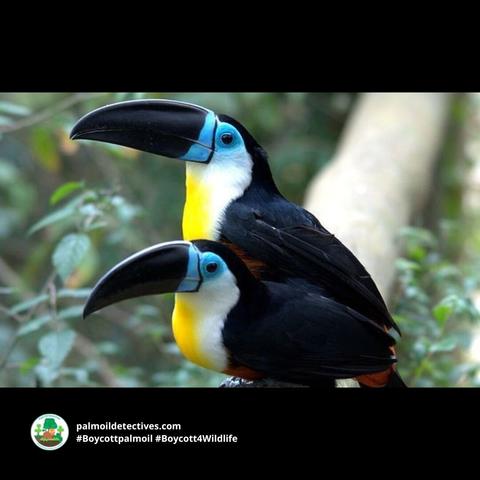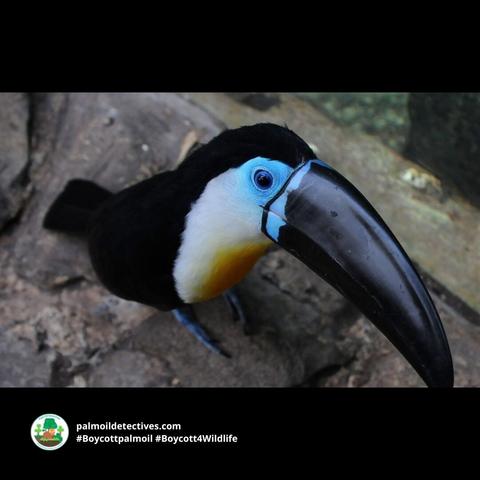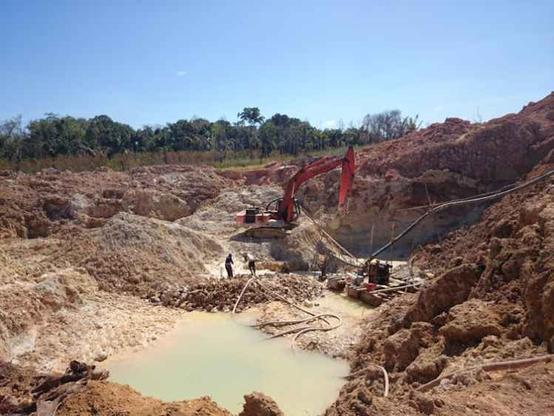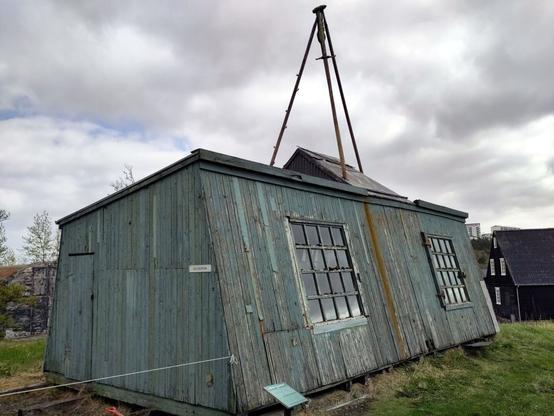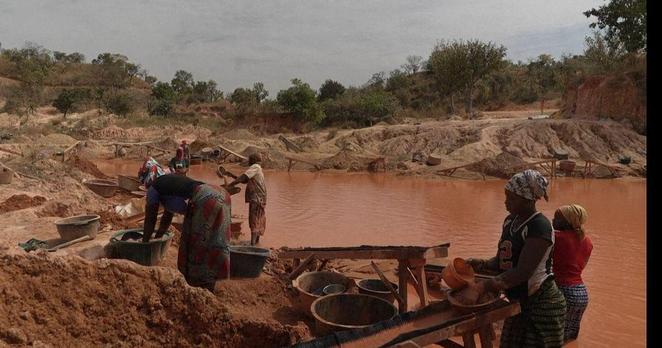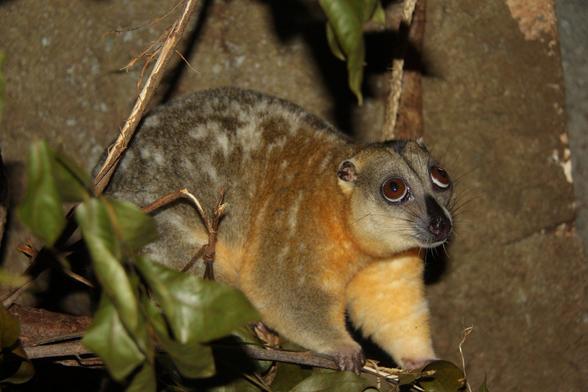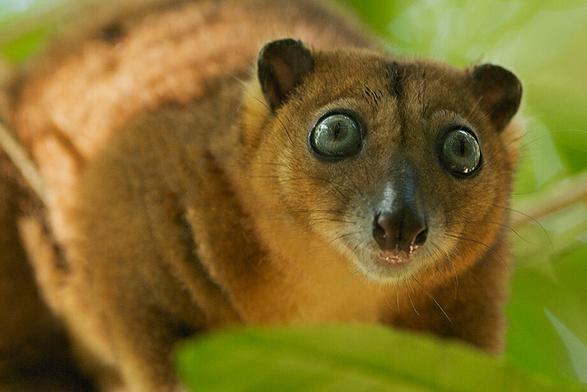Gold is Up 30%, But the Real Bull Market is Only Starting NOW! – SILVER NOT YET!? | Adrian Day https://www.bocvip.com/911689/gold-is-up-30-but-the-real-bull-market-is-only-starting-now-silver-not-yet-adrian-day/ #AdrianDay #CanadianMarket #financial #FinancialEducation #gas #gold #GoldBullRun #GoldJuniors #GoldMiners #GoldMining #GoldPrice #investing #InvestingInGoldMiningStocks #Mining #money #MoneyTalk #oil #PreciousMetals #Resource #silver #SilverMining #SilverPrice #SilverSqueeze #SmallCapStocks #StockMarkets #TSX #TSXV
#GoldMining
LaFleur Minerals advances gold production in Québec with fully permitted Beacon Mill, 123,400 oz resource estimate, and strategic 5,000m drilling program targeting 1M oz #GoldMining #Exploration
Mali court places Canada's Barrick gold mine under provisional administration http://newsfeed.facilit8.network/TLPDJ5 #Mali #BarrickGold #MiningNews #GoldMining #Africa
"The harsh reality of boom-and-bust gold mining becomes clear: The brief boom benefited only a fortunate few. The bust was for everyone else."
NEW on Longreads: An excerpt from Josh Jackson's new book, THE ENDURING WILD, out on June 24 from Heyday Books:
#Longreads #Books #California #Gold #GoldMining #BLM #Wilderness #Outdoors
The smoke from #Canada’s #wildfires may be even more #toxic than usual
A legacy of #mining means that #ToxicMetals could be carried along plumes of smoke.
by Matt Simon, June 5, 2025
"More than 200 wildfires are blazing across central and western Canada, half of which are out of control because they’re so hard for crews to access, forcing 27,000 people to evacuate. Even those nowhere near the wildfires are suffering as smoke swirls around Canada and wafts south, creating hazardous air quality all over the midwestern and eastern parts of the United States. The smoke is even reaching Europe.
"As the climate changes, the far north is drying and warming, which means wildfires are getting bigger and more intense. The area burned in Canada is now the second largest on record for this time of year, trailing behind the brutal wildfire season of 2023. That year, the amount of #carbon blazed into the atmosphere was about three times the country’s #FossilFuel emissions. And the more carbon that’s emitted from wildfires — in Canada and elsewhere — the faster the #PlanetaryWarming, and the worse the fires.
" 'There’s obviously the #ClimateFeedback concern,' said Mike Waddington, an environmental scientist at McMaster University in Ontario who studies Canada’s forests. 'But increasingly we’re also concerned about the smoke.'
"That’s because there’s much more to wildfire smoke than charred sticks and leaves, especially where these blazes are burning in Canada. The country’s #forests have long been #mined, operations that loaded #soils and #waterways with #ToxicMetals like #lead and #mercury, especially before clean-air standards kicked in 50 years ago. Now everyone downwind of these wildfires may have to contend with that legacy and those pollutants, in addition to all the other nasties inherent in #WildfireSmoke, which are known to exacerbate respiratory and cardiac problems.
" 'You have there the burning of these organic soils resulting in a lot of carbon and a lot of #ParticulateMatter,' said Waddington. 'Now you have this triple whammy, where you have the metals #remobilized in addition to that.'
"What exactly is lurking in the smoke from Canadian wildfires will require further testing by scientists. But an area of particular concern is around the mining city of #FlinFlon, in #ManitobaCanada, which is known to have elevated levels of toxic metals in the landscape, said Colin McCarter, an environmental scientist who studies pollutants at Ontario’s #NipissingUniversity. Flin Flon’s 5,000 residents have been evacuated as a wildfire approaches, though so far no structures have been destroyed.
"But a fire doesn’t need to directly burn mining operations to mobilize toxicants. For example, in #Yellowknife, in Canada’s #NorthwestTerritories, #GoldMining operations between 1934 and 2004 spread #arsenic as far as 18 miles away, adding to a landscape with an already high concentration of naturally occurring arsenic. In a paper published last year, Waddington and McCarter estimated that between 1972 and 2023, wildfires around Yellowknife fired up to 840,000 pounds of arsenic into the atmosphere. Arsenic is a known carcinogen associated with cardiovascular disease, diabetes, and developmental problems, according to the World Health Organization. (After the 2023 #LahainaFire in Maui, officials reported elevated levels of arsenic, lead, and other toxic substances in ash samples. California officials also found lots of lead in smoke from 2018’s #CampFire.)"
Source:
https://grist.org/climate/canada-wildfire-smoke-toxic-arsenic/?utm_source=firefox-newtab-en-us
#WaterIsLife #SoilIsLife #AirIsLife #Mining #ToxicLegacy #FirstNations #Canada #Pollution #Worldwide #AQI #ClimateChange #ClimateCrisis #ClimateCatastrophe #AirQualityIndex
ESGold Corp leads sustainable gold production, leveraging innovative mining practices and strategic Quebec assets as gold market transforms. Institutional investors take note of emerging scalable producers. #GoldMining #Sustainability
Mali suspends artisanal gold mining activities during rainy season http://newsfeed.facilit8.network/TL8BdH #Mali #GoldMining #ArtisanalMining #MiningSafety #RainySeason
Brazilian three-banded armadillo Tolypeutes tricinctus
Brazilian three-banded armadillo Tolypeutes tricinctus
Vulnerable
Extant (resident): Brazil: Minas Gerais, Bahia, Alagoas, Sergipe, Pernambuco, Rio Grande do Norte, Goiás, Tocantins, Piauí, Paraíba, Ceará, Maranhão.
The Brazilian three-banded #armadillo Tolypeutes tricinctus, known as “tatu-bola” in Portuguese, is a rare and unique species native to #Brazil. With the ability to roll into a near-impenetrable ball, this endearing behaviour has made them an icon of conservation efforts. They are found in the dry forests and savannahs of Brazil, particularly in the #Cerrado and Caatinga biomes. These fascinating armoured creatures are Vulnerable on the IUCN Red List due to agricultural expansion for #palmoil, #soy and #meat. Fragmentation of their ecosystem is ongoing for infrastructure projects and #goldmining. With their population in sharp decline, efforts to protect their habitats are essential for their survival. Help them every time you shop and adopt a #vegan diet, and #BoycottPalmOil #BoycottGold #Boycott4Wildlife on social media!
Resilient Brazilian three-banded #armadillos are fascinating real-life #pokemon of #SouthAmerica. They’re vulnerable from #palmoil meat and soy #deforestation in #Brazil. Resist their #extinction! Be #vegan #Boycottpalmoil #Boycott4Wildlife @palmoildetect https://wp.me/pcFhgU-8R9
Share to BlueSky Share to TwitterBrazilian three-banded #armadillos are the adorable armoured tanks of #Brazil’s #Cerrado who can curl into an armoured ball. They are #vulnerable from #deforestation. Help them survive by being #vegan and #Boycottpalmoil #Boycott4Wildlife @palmoildetect https://wp.me/pcFhgU-8R9
Share to BlueSky Share to TwitterAppearance & Behaviour
- The word “armadillo” means “little armoured one” in Spanish.
- They are known as ‘kwaráu’ in the now extinct Huamoé language and ˈkʌ̨́ñíkį̀ in the Kambiwá language of Brazil.
- Brazilian three-banded armadillos have a good nose and can smell termites and ants through up to 20 cm of soil.
- Their loose armour creates a layer of air, helping them to regulate their temperature in harsh climates.
- They are one of only two armadillo species that can roll into a tight ball.
Brazilian three-banded armadillos are easily recognised by their distinctive armour, which is composed of bony plates known as scutes. These scutes, covered in keratinised skin, form a protective shell around the animal’s body, allowing them to roll into a tight ball when threatened. This unique defence mechanism makes them virtually immune to most natural predators in the wild – except for humans. Their compact body length of 22 to 27 cm and a weight of about 1 to 1.6 kg makes it easy for them to navigate in the forest.
Their distinctive sharp claws and elongated snouts are perfectly adapted for foraging for ants and termites. Although primarily solitary, they sometimes travel in small family groups. They keep their noses to the ground sniffing out insects and move in a deliberate cautious way. Unlike other burrowing armadillos they prefer to hide in bushes for shelter and camouflage.
Threats
Deforestation for palm oil, soy and meat agriculture
Forest and grassland destruction for soy, palm oil, sugar cane and meat plantations is a serious threat. This has drastically reduced the Brazilian three-banded armadillo’s range in the Cerrado and Caatinga biomes.
Human encroachment for infrastructure projects
The Brazilian three-banded armadillo is impervious to many natural threats in their environment. However, infrastructure projects, roads, housing have become a significant threat to their survival.
Illegal hunting
Brazilian three-banded armadillos are hunted for their skins and meat.
Conservation
Conservation efforts for the Brazilian three-banded armadillo are indirect and focused on habitat protection rather than direct intervention. Protected areas within the Cerrado and Caatinga offer some refuge for the species. Yet large portions of their habitat remains at risk for deforestation.
Habitat
Resilient and tough, this armadillo has adapted over millions of years to thrive in harsh landscapes of poor rainfall and poor soil. Brazilian three-banded armadillos are found primarily in the northeastern regions of Brazil, inhabiting the open savannahs of the Cerrado and the dry woodlands of the Caatinga.
Diet
Brazilian three-banded armadillos are primarily insectivores, relying heavily on ants and termites as their main food source. Sharp claws allow them to dig into insect nests, and they use their long, sticky tongues to collect the prey. Occasionally they supplement their diet with molluscs, worms, fruit, and carrion.
Mating and breeding
The breeding season occurs between October and January. After a gestation period of approximately 120 days, females give birth to a single pup. Newborns are born blind, and their armour remains soft and pliable in the first weeks of life. A young armadillo’s shell hardens by week four. By this time they will be capable of protective rolling into a ball and walking. They are weaned by 10 weeks of age and reach reproductive maturity between 9 and 12 months.
Support Brazilian Three-Banded Armadillos by going vegan and boycotting palm oil in the supermarket, it’s the #Boycott4Wildlife
Support the conservation of this species
This animal has no protections in place. Read about other forgotten species here. Create art to support this forgotten animal or raise awareness about them by sharing this post and using the #Boycottpalmoil #Boycott4Wildlife hashtags on social media. Also you can boycott palm oil in the supermarket.
Further Information
Miranda, F., Moraes-Barros, N., Superina, M., & Abba, A. M. (2014). Tolypeutes tricinctus. The IUCN Red List of Threatened Species 2014: e.T21975A47443455. https://doi.org/10.2305/IUCN.UK.2014-1.RLTS.T21975A47443455.en
Wikipedia Contributors. (n.d.). Brazilian three-banded armadillo. In Wikipedia, The Free Encyclopedia. Retrieved September 16, 2024, from https://en.wikipedia.org/wiki/Brazilian_three-banded_armadillo
Animalia. (n.d.). Brazilian Three-Banded Armadillo. Retrieved from https://animalia.bio/brazilian-three-banded-armadillo
How can I help the #Boycott4Wildlife?
Take Action in Five Ways
1. Join the #Boycott4Wildlife on social media and subscribe to stay in the loop: Share posts from this website to your own network on Twitter, Mastadon, Instagram, Facebook and Youtube using the hashtags #Boycottpalmoil #Boycott4Wildlife.
Enter your email address
Sign Up
Join 1,390 other subscribers2. Contribute stories: Academics, conservationists, scientists, indigenous rights advocates and animal rights advocates working to expose the corruption of the palm oil industry or to save animals can contribute stories to the website.
Mel Lumby: Dedicated Devotee to Borneo’s Living Beings
Anthropologist and Author Dr Sophie Chao
Health Physician Dr Evan Allen
The World’s Most Loved Cup: A Social, Ethical & Environmental History of Coffee by Aviary Doert
How do we stop the world’s ecosystems from going into a death spiral? A #SteadyState Economy
3. Supermarket sleuthing: Next time you’re in the supermarket, take photos of products containing palm oil. Share these to social media along with the hashtags to call out the greenwashing and ecocide of the brands who use palm oil. You can also take photos of palm oil free products and congratulate brands when they go palm oil free.
https://twitter.com/CuriousApe4/status/1526136783557529600?s=20
https://twitter.com/PhillDixon1/status/1749010345555788144?s=20
https://twitter.com/mugabe139/status/1678027567977078784?s=20
4. Take to the streets: Get in touch with Palm Oil Detectives to find out more.
5. Donate: Make a one-off or monthly donation to Palm Oil Detectives as a way of saying thank you and to help pay for ongoing running costs of the website and social media campaigns. Donate here
Pledge your supportLearn about other animals endangered by palm oil and other agriculture
Global South America S.E. Asia India Africa West Papua & PNGBrazilian three-banded armadillo Tolypeutes tricinctus
Sumatran Tiger Panthera tigris sondaica
Bateleur Eagle Terathopius ecaudatus
Borneo Forest Dragon Gonocephalus bornensis
Orange-breasted Falcon Falco deiroleucus
Sunda Clouded Leopard Neofelis diardi
Learn about “sustainable” palm oil greenwashing
Read more about RSPO greenwashing
Lying Fake labels Indigenous Land-grabbing Human rights abuses Deforestation Human health hazardsA 2019 World Health Organisation (WHO) report into the palm oil industry and RSPO finds extensive greenwashing of palm oil deforestation and the murder of endangered animals (i.e. biodiversity loss)
Read more#animals #armadillo #armadillos #Bantrophyhunting #Boycott4wildlife #BoycottGold #BoycottPalmOil #Brazil #BrazilianThreeBandedArmadilloTolypeutesTricinctus #Cerrado #deforestation #extinction #ForgottenAnimals #goldMining #goldmining #hunting #meat #meatAgriculture #meatAndSoyDeforestationInBrazil #meatDeforestation_ #PalmOil #palmOilDeforestation #palmoil #poachers #poaching #pokemon #SouthAmericaSpeciesEndangeredByPalmOilDeforestation #SouthAmerica #soy #soyDeforestation #vegan #vulnerable #VulnerableSpecies
ESGold Corp. advances Montauban project with innovative tailings recovery circuit, targeting year-end 2025 production and emphasizing sustainable mining practices. #GoldMining #Sustainability
Colourful tree-dwellers Channel-billed Toucans are #Amazon #icons in #Brazil 🇧🇷#Venezuela 🇻🇪 #Colombia 🇨🇴 Threats include #PalmOil 🌴🔥#Soy #Meat 🥩🔥and #GoldMining 🥇🔥 Help them survive when you #BoycottPalmOil 🌴☠️🧐⛔️ #BoycottGold #Boycott4Wildlife https://palmoildetectives.com/2021/08/02/channel-billed-toucan-ramphastos-vitellinus/?utm_source=mastodon&utm_medium=Palm+Oil+Detectives&utm_campaign=publer
Key To Reversing Amazonia’s Mineral Demand: Indigenous Empowerment
Illegal #mining for minerals like #gold and cassiterite, the latter used for renewable energy, is driving #deforestation in Indigenous #Amazonia. Countries like #Brazil, #Suriname and #Guyana face the challenge of conserving forests, protecting #indigenous peoples, biodiversity whilst also meeting international resource demands. Empowering indigenous peoples to care for biodiversity rich areas of Amazonia is key to saving them for future generations. Act now to protect Indigenous lands and wildlife. #BoycottGold4Yanomami #Boycott4Wildlife.
The drive for #mineral #mining in #Amazonia is driving #indigenous peoples and endangered #animals towards #extinction. Help and fight for them when you #BoycottGold4Yanomami #Boycott4Wildlife @palmoildetect @barbaranavarro https://wp.me/pcFhgU-8TF
Share to BlueSky Share to TwitterKey to tempering #Amazonia’s mineral #mining demand for #gold and other metals is prioritising #Indigenous #empowerment #landrights and indigenous sovereignty #BoycottGold4Yanomami #Boycott4Wildlife @barbaranavarro @palmoildetect https://wp.me/pcFhgU-8TF
Share to BlueSky Share to TwitterWritten by Yolanda Ariadne Collins, Lecturer, International Relations, University of St Andrews. This article is republished from The Conversation under a Creative Commons license. Read the original article.
Mining for gold in Suriname. Yolanda Ariadne Collins, CC BY-NC-NDIllegal mining for critical minerals needed for the global renewable energy transition is increasingly driving deforestation in Indigenous lands in the Amazon.
In recent years, these illegal miners, who are often self-employed, mobile and working covertly, have expanded their gold mining operations to include cassiterite or “black gold”, a critical mineral essential for the renewable energy transition. Cassiterite is used to make coatings for solar panels, wind turbines and other electronic devices. Brazil, one of the world’s largest exporters of this mineral, is now scrambling to manage this new threat to its Amazon forests.
The need for developing countries such as Brazil to conserve their forests for the collective global good conflicts with the increasing demand for their resources from international markets. To complicate matters further, both the renewable energy transition and the conservation of the Amazon are urgent priorities in the global effort to arrest climate change.
But escalating deforestation puts these forests at risk of moving from a carbon sink – with trees absorbing more carbon dioxide from the atmosphere than they release – to a carbon source, whereby trees release more carbon dioxide than they absorb as they degrade or are burnt.
Indigenous and other forest-dwelling communities are central to forest conservation. In 2014, I spent a year living in Guyana and Suriname, two of the nine countries that share the Amazon basin. I studied the effectiveness of international policies that aim to pay these countries to avoid deforestation.
I met with members of communities who were bearing the brunt of the negative effects of small-scale gold mining, such as mercury poisoning and loss of hunting grounds. For decades, mining for gold, which threatens communities’ food supply and traditional ways of life, has been the main driver of deforestation in both countries.
Small-scale mining operations can damage both communities and the natural world. Gold mining, which generates gold for export used for jewellery and electronics, usually begins with the removal of trees and vegetation from the topsoil, facilitated by mechanical equipment such as excavators. Next, the miners dig up sediment, which gets washed with water to extract any loose flecks of gold.
Miners usually then add mercury, a substance that’s known to be toxic and incredibly damaging to human health, to washing pans to bind the gold together and separate it from the sediment. They then burn the mercury away, using lighters and welding gear. During this process, mercury is inhaled by miners and washed into nearby waterways, where it can enter the food chain and poison fish and other species, including humans.
My new book, Forests of Refuge: Decolonizing Environmental Governance in the Amazonian Guiana Shield, highlights the colonial histories through which these countries were created. These histories continue to inform the land-use practices of people and forest users there. Having seen the dynamics firsthand, I argue that these unaddressed histories limit the effectiveness of international policies aimed at reducing deforestation.
Some of the policies’ limitations are rooted in their inattentiveness to the roughly five centuries of colonialism through which these countries were formed. These histories had seen forests act as places of refuge and resistance for Indigenous and Afro-descendant communities. I believe that power structures created by these histories need to be tackled through processes of decolonisation, which includes removing markets from their central place in processes of valuing nature, and taking seriously the worldviews of Indigenous and other forest-dependent communities.
But since 2014, small-scale mining-led deforestation in the Amazon has persisted, and even increased. The increase in mining worldwide, driven partly by the renewable energy transition, indicates that these power structures might be harder to shift than ever before.
Added pressure
When crackdowns on illegal gold mining took place in Brazil in the 1970s and ’80s, miners moved en masse to nearby Guyana and Suriname, taking their environmentally destructive technologies with them. Illegal miners of cassiterite are now following a similar pattern, showing that the global effort to reduce deforestation cannot simply focus on a single commodity as a driver of deforestation on the ground.
My work shows that the challenge of mining-led deforestation in the Amazon is rooted in historically informed, global power structures that position the Amazon and its resources as available for extraction by industries and governments in wealthier countries. These groups of people are now seeking to reduce their disproportionately high emissions through technological solutions and not through behavioural change.
These tensions also have roots in the readiness of governments and forest users in postcolonial countries, like Brazil and Guyana, to respond positively and unquestioningly to international demand for these resources.
In the Amazon, outcomes are affected by whether different groups of people have access to livelihoods that do not drive deforestation, such as those based on non-timber forest products. The situation is further shaped by the extent to which governments can work together to ensure that crackdowns in one part of the Amazon, such as Brazil, do not just drive deforestation elsewhere to Suriname, for example.
Until the power structure that disadvantages Indigenous and other historically marginalised groups changes, the negative effects of developing technologies to “save” the planet will continue to disproportionately burden these groups, even as their current way of life remains critical to supporting sustainable development outcomes.
Written by Yolanda Ariadne Collins, Lecturer, International Relations, University of St Andrews. This article is republished from The Conversation under a Creative Commons license. Read the original article.
ENDS
https://youtu.be/RLsqyADpgn0?si=BniKvXzjQFeZXUoV
Read more about gold mining, indigenous rights and its cost to animals
Key To Reversing Amazonia’s Mineral Demand: Indigenous Empowerment
Illegal #mining for minerals like #gold and cassiterite, the latter used for renewable energy, is driving #deforestation in Indigenous #Amazonia. Countries like #Brazil, #Suriname and #Guyana face the challenge of conserving forests, protecting…
New Research: Indigenous Communities Reduce Amazon Deforestation by 83%”
Although #deforestation rates in the Brazilian #Amazon have halved, this globally critical biome is still losing more than 5,000km² every year. That’s an area three times larger than Greater London. By combining satellite…
How We End Gold Mining’s Ecocide For Good
Gold mining is unparalleled in its environmental destruction and human rights toll. Frustratingly, 93% of gold is used for non-essential purposes like jewellery and investments.
A recent study suggests that transitioning to…
Did you know that gold kills indigenous people and rare animals?
Gold mining kills indigenous peoples throughout the world like the Yanomami people of Brazil and Papuans in West Papua. The bloody, violent and greedy landgrabbing that goes on for gold forces indigenous women…
Marsh Deer Blastocerus dichotomus
The Marsh deer are South America’s largest deer species, uniquely adapted to wetland life with their web-like hooves and preference for aquatic plants. They are prey animals for jaguars and pumas.
These…
Load more posts
Something went wrong. Please refresh the page and/or try again.
Take Action in Five Ways
1. Join the #Boycott4Wildlife on social media and subscribe to stay in the loop: Share posts from this website to your own network on Twitter, Mastadon, Instagram, Facebook and Youtube using the hashtags #Boycottpalmoil #Boycott4Wildlife.
Enter your email address
Sign Up
Join 1,389 other subscribers2. Contribute stories: Academics, conservationists, scientists, indigenous rights advocates and animal rights advocates working to expose the corruption of the palm oil industry or to save animals can contribute stories to the website.
Mel Lumby: Dedicated Devotee to Borneo’s Living Beings
Anthropologist and Author Dr Sophie Chao
Health Physician Dr Evan Allen
The World’s Most Loved Cup: A Social, Ethical & Environmental History of Coffee by Aviary Doert
How do we stop the world’s ecosystems from going into a death spiral? A #SteadyState Economy
3. Supermarket sleuthing: Next time you’re in the supermarket, take photos of products containing palm oil. Share these to social media along with the hashtags to call out the greenwashing and ecocide of the brands who use palm oil. You can also take photos of palm oil free products and congratulate brands when they go palm oil free.
https://twitter.com/CuriousApe4/status/1526136783557529600?s=20
https://twitter.com/PhillDixon1/status/1749010345555788144?s=20
https://twitter.com/mugabe139/status/1678027567977078784?s=20
4. Take to the streets: Get in touch with Palm Oil Detectives to find out more.
5. Donate: Make a one-off or monthly donation to Palm Oil Detectives as a way of saying thank you and to help pay for ongoing running costs of the website and social media campaigns. Donate here
Pledge your support#AmazonRainforest #Amazonia #animals #Boycott4wildlife #BoycottGold4Yanomami #Brazil #corruption #deforestation #empowerment #extinction #gold #goldMining #Guyana #indigenous #IndigenousActivism #indigenousKnowledge #indigenousRights #landRights #landrights #mineral #mining #Suriname #Yanomami
12.05.2025, #iceland #Reykjavik #Árbær #OpenAirMuseum #GoldMining
Mercury in Senegal mines endangers families http://newsfeed.facilit8.network/TKkZsV #Senegal #GoldMining #MercuryPollution #Kedougou #ChildLabor
Emperor Metals engages Norda Stelo for Gap Analysis at Lac Pelletier Gold Project, targeting one-million-ounce resource by 2025 with strategic infrastructure and regulatory preparation #GoldMining #MineralExploration
Experts fear these precious animals may already be extinct, less than 50 remain alive due to #goldmining and #palmoil. Help protect the enchanting Telefomin #Cuscus from disappearing forever when u #BoycottPalmOil #Boycott4Wildlife @palmoildetect https://wp.me/pcFhgU-nv?utm_source=mastodon&utm_medium=Palm+Oil+Detectives&utm_campaign=publer
G Mining Ventures reveals robust feasibility study for Oko West Gold Project: 4.3M gold ounces, $2.2B NPV, 27% IRR over 12.3 years. Promising development in Guyana's mining sector. #GoldMining #Investment
While everyone's focused on gold's record prices, many gold mining companies are still incredibly undervalued. Some of our favorites are up 40-60% but STILL trading at absurdly cheap multiples. #GoldMining #ValueInvesting #MarketOpportunity https://www.schiffsovereign.com/trends/bizarrely-gold-is-the-opposite-of-the-bitcoin-effect-right-now-152700/
Several gold mining and streaming companies are still trading at absurdly low multiples. Even with gold near record highs, there are still opportunities in this sector, i.e. companies trading at < 2x forward earnings. #GoldMining #Investing #Commodities https://www.schiffsovereign.com/trends/americas-suez-moment-has-arrived-152688/
Golden Cariboo discovers visible gold in drill hole QGQ24-21, revealing promising mineralization in British Columbia's Quesnelle Gold Quartz Mine property. Exploration continues with strategic drilling approach. #GoldMining #Exploration
Nigeria’s Mining Fees Hit ₦6.9B in 2025: Alake’s $10B Vision https://www.rainsmediaradio.com/2025/04/nigerias-mining-fees-hit-69b-in-2025.html?utm_source=dlvr.it&utm_medium=mastodon Follow, Like & Share #NigeriaMining #MiningFees #AlakeVision #SolidMinerals #GoldMining






